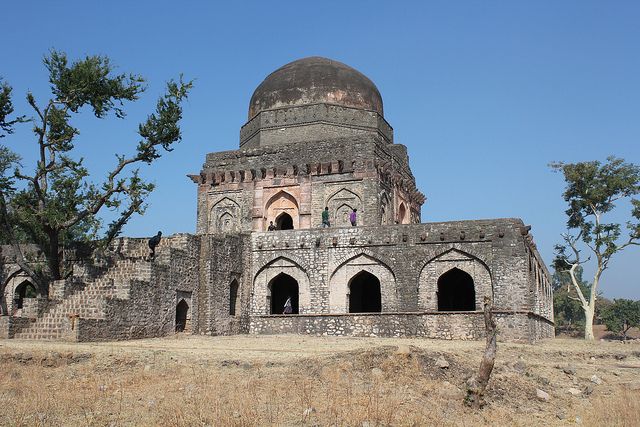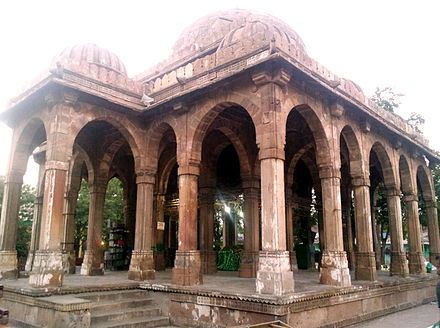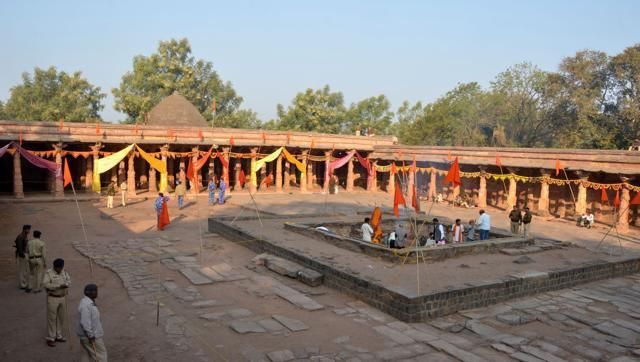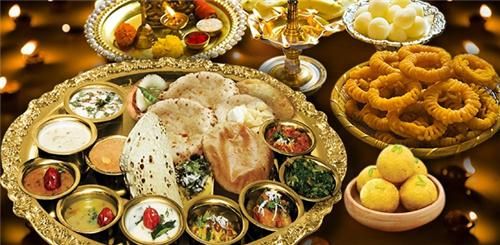INTRODUCTION
Dhar district is a district of Madhya Pradesh state in central India. The historic town of Dhar is administrative headquarters of the district. The district has an area 8,153 km². It is bounded by the districts of Ratlam to the north, Ujjain to the northeast, Indore to the east,Khargone (West Nimar) to the southeast, Barwani to the south, and Jhabua to the west. It is part of the Indore Division of Madhya Pradesh. The population of the district is 1,740,577 (2001 census), an increase of 24% from its 1991 population of 1,367,412.Pithampur is a large industrial area comes under Dhar District.

Image Credit - Arian Zwegers
The Vindhya Range runs east and west through the district. The northern part of the district lies on the Malwa plateau. The northwestern portion of the district lies in the watershed of the Mahi River and its tributaries, while the northeastern part of the district lies in the watershed of the Chambal River, which drains into the Ganges via the Yamuna River. The portion of the district south of the ridge of the Vindhyas lies in the watershed of the Narmada River, which forms the southern boundary of the district. Dhar district is divided into 5 sub-divisions: Dhar, Sardarpur, Badnawar, Manawar and Kukshi.
These sub-divisions are further divided into 7 tehsils: Dhar, Badnawar, Dharampuri, Sardarpur, Manawar, Kukshi and Gandhwani. There are seven Vidhan Sabha constituencies in this district:
- Sardarpur
- Gandhwani
- Kukshi
- Manawar
- Dharampuri
- Dhar
- Badnawar.
All of these are part of the only Lok Sabha constituency in this district: Dhar.
According to the 2011 census Dhar District has a population of 2,184,672, roughly equal to the nation of Latvia or the US state of New Mexico. This gives it a ranking of 208th in India (out of a total of 640). The district has a population density of 268 inhabitants per square kilometre (690/sq mi). Its population growth rate over the decade 2001-2011 was 25.53%. Dhar has a sex ratio of 961 females for every 1000 males, and a literacy rate of 60.57%.
click here for official website: official website

Image Credit - Arian Zwegers
HISTORY
The town of Dhār, the name of which is usually derived from Dhārā Nagara ('city of sword blades'), is of considerable antiquity, the first reference to it appearing in an inscription from Jaunpur belonging to the Maukhari dynasty. Despite this sixth century reference, Dhār only rose to historical prominence when it was made the seat of the Paramara chiefs of Malwa by Vairisiṃha. He appears to have transferred his headquarters hither from Ujjain. During the rule of the Paramāras, Dhār became famous throughout India as a centre of culture and learning, especially under king Bhoja (circa 1000-1055). The wealth and splendor of Dhār drew the attention of competing dynasties during the 11th century. The Cāḷukyas of Kalyāṇa under Someśvara I (circa CE 1042-68) captured and burnt the city, occupying also Mandu. Slightly later Dhār was sacked by the Cāḷukyas of Gujarāt under Siddharāja.
The devastation and political fragmentation caused by these wars meant that no significant opposition was offered when Sultān of Delhi, Ala ud din Khilji dispatched an army to Mālwa in the early 14th century. The region was annexed to Delhi and Dhār made the capital of the province under 'Ayn al-Mulk Mūltānī. He served as governor until 1313. Events during the following seventy years are unclear, but some time in A.H. 793/C.E. 1390-91 Dilawar Khan was appointed muqṭi' of Dhār (and so governor of Mālwa) by Sulṭān Muḥammad Shāh. Dilāwar Khān took the title 'Amīd Shāh Dā'ūd and caused the khutba to be read in his name in A.H. 804/C.E. 1401-02, thereby establishing himself as an independent sulṭān. On his death in 1406, his son Hoshang Shah became king with his capital at Māṇḍū. Subsequently, in the time of Akbar, Dhār fell under the dominion of the Mughals, in whose hands it remained till 1730, when it was conquered by the Marathas.
In late 1723, Bajirao at the head of a large army and accompanied by his trusted lieutenants, Malharrao Holkar, Ranoji Shinde (Scindia) and Udaji Rao Pawar, swept through Malwa. A few years earlier the Mughal Emperor had been forced to give the Marathas the right to collect chauth taxes in Malwa and Gujarat. This levy added much value to the Marathas, as both the king Shahu and his Peshwa, Bajirao, were ear-deep in debt. The revenues they collected from their own lands were not sufficient to run the administration of the state and finance their large military expenditure. The Marathas lived by the sword and trade was alien to them. Agriculture in theDeccan depended heavily on the timeliness and sufficiency of the monsoons. The most important source of money were therefore the chauth (a 25% tax on produce) andsardeshmukhi (a ten percent surcharge) exacted by the Marathas. The Maratha armies defeated the Mughal governor and attacked the capital Ujjain. Bajirao established military outposts in the country as far north as Bundelkhand.
Towards the close of the 18th and in the early part of the 19th century, the state was subject to a series of spoliations by Scindia of Gwalior and Holkar of Indore, (descendants of Ranoji Scindia and Malharao Holkar). It was only preserved from annihilation by the talents and courage of the adoptive mother of the fifth raja.
Dhar State
Main article: Dhar State
After the Third Anglo-Maratha War, of 1818, Dhar passed under British rule. Dhar State became a princely state of British India, in the Bhopawar Agency of the Central India Agency. It included many Rajput and Bhil feudatories, and had an area of 1,775 square miles (4,600 km2). The state was confiscated by the British in the Revolt of 1857, but in 1860 was restored to Raja Anand Rao III Pawar, then a minor, with the exception of the detached district of Bairusia, which was granted to the Begum of Bhopal. Anand Rao, who received the personal title Maharaja and the KCSI in 1877, died in 1898; he was succeeded by Udaji Rao II Pawar.
Dhar Thikanas
A separate department to superintend Thakurs and Bhumias, Entitled "Department of Thakurans, Bhumian and Thikanejat" was established in 1921, at which time there were 22 such estates in Dhar State.
The nobles of Dhar holding jagir lands (feudatory estates), all of whom paid tribute to the Darbar, were divided between Thakurs and Bhumias.
The Thakurs with one exception were Rajput landholders whose estates were located in the north of the state. Locally, the Thakurs were styled Talukdars and their holdings called kothari. By caste there were 8 Rathor Rajputs, one Pawar and one Kayasth.
The Bhumias or "Allodial" Chiefs were all Bhilalas, a clan claiming mixed tribal Bhil people and Rajput (Chauhan) descent. Their grants were originally obtained from the Darbar on the understanding that they kept the peace among the Bhils and other wild hill tribes. They paid yearly tribute to the Darbar, while some received cash allowances (Bhet-Ghugri), an ancient feudal custom which has its origins in blackmail.abc
Political Representation and Royal Legacy
Bhartiya Janata Party politician Neena Vikram Verma serves as a Member of the Madhya Pradesh Legislative Assembly for Dhar Vidhan Sabha Constituency.
Maharaja Shrimant Hemendra Singh Rao Pawar is present titular head of the Kshatriya Maratha-Rajput Pawar(Puar/Parmar) dynasty of Dhar State
FESTIVALS
Dhar district has been on the cultural map of India since time immemorial. People used to engage themselves in fine arts such as painting, sculpture, music, and dancing.
Many of the Bagh cave paintings of the Gupta period have now been destroyed but whatever remain tell us about the high attainment during that period. There is a beautiful painting regarding music and dance, which is an example of the oriental Hallisak dance. The depiction of nature in its affluent forms, together with male and female figures in various emotional poses is the treasure of these caves. The construction of magnificent buildings, forts, temples, mosques, etc., during the medieval period at Dhar, Mandu and the surroundings indicate the engagements and amusements of the people of those days.
Young people draw inspiration from the famous love story of Baaz-Bahadur and Roopmati. In literature, music, dance, painting and sculpture Dhar has a very rich heritage.
During the middle of the 16th century, the science of music had attained considerable perfection in Malwa and it is said that Baaz Bahadur devoted himself to its cultivation and encouragement. His attachment to Rani Roopmati at that time become famous and the "Loves of Baaz Bahadur and Roopmati" have been handed down to posterity in song.
In rural areas, community bhajan singing at the village chaupals in the night with the accompaniment of harmonium (peti) mridang, tabala, dholak-manjire, mandal, zanch, kundi, thali, payli and dhak is the most common amusement. Vasant Pnchmi, Maha Shivaratri, Holi, Ramnavmi, Raksha-Bandhan, Nag-Panchmi, Janmashtami, Ganesh Chaturthi, Anant Chaturdashi, Sarva Pitri Amavsya, dusshera, Deepawali, Dol Gyaras, Hanuman Jayanti, etc., are celebrated with great religious zeal and enthusiasm by the Hindus Shradha Paksha (fortnight) is celebrated from poornima of Bhadra to amavasya Kunwar.
Popular festivals of Muslims include muharram, Id, Miladunabi, etc., which they celebrate with their traditional gaiety.
Christians celebrate Christmas and Good Friday and Jains, Mahavir Jayanti and Paryooshan etc. In some castes, Radeoji and Tejaji are worshipped once in a year on their jayantis and their respective kathas are performed. The dates of celebration are different in the various tahsils.
PILGRIM PLACES
There are many religious places scattered throughout the district where people congregate at annual fairs arranged on auspicious occasions.
Dhar district has 8 tahsils inclucing Dhar itself, namely Badnawar, Sardarpur, Dhar, Dharampuri and Manawar, Gandhwani, Kukshi and Dhar.
Koteshwar, Khakrol and Badnawar are located in Badnawar tahsil; Bhopawar, Sagwal and Amjhera are located in Sardarpur tahsil; Mandu, Kesur Dhar and Sagor are located in Dhar tahsil; Lingwa and Kotda in Kukshi tahsil, Dhamnod in Dharampuri tahsil, Manawar, Bakaner and Singhana in Manawar tehsil, are a few out of a total about 40 such pilgrim centres.
Hanuman jayanti and Shivratri respectively attract thousands of pilgrims from the interiors of the District and outside, to the places of worship where special worship is offered to the concerned deities.
Gal and Hazrat Biyabani Yatra, Shantinathji ka Mela, Tejaji ka Mela, Ambikaji ka Mela, Urs Kamal-ud-din and Gular Shah Urs attract thousands of followers.
Mother goddess in various forms is worshipped with special reverence. Ambika Devi (Dhar and Dhammod) Mangala Devi (Manawar) Shitalamata Devi (Bakaner) Harsiddhi Mata (Singhana) and Jagni Mata (Jhiriya pura), are a few examples.
Mandu is the place where Jehangir came and stayed with Nur Jehan. He was accompanied by Sir Thomas Roe, the English ambassador. Jehangir wrote "I know of no place so pleasant in climate and so pretty in scenery as Mandu in the rainy season. Shah Jahan too spent the rainy season of the year 1622 in Mandu. The famous Ram Navami fair is organised here by the mahant of the temple on Chaitra Sudi (March/April), in which thousands of people participate."
HISTORIC PLACES
The most ancient parts of Dhār visible are the massive earthen ramparts which are best preserved on the western and southern sides of the town. These were probably built beginning in the ninth century and show that the city was circular in plan and surrounded by a series of tanks and moats. The layout is similar to the circular city of Warangal in the Deccan. The circular ramparts of Dhār, unique in north India and an important legacy of the Paramāras, is being destroyed by brick-makers and others using the material for construction purposes. On the north-east side of the town, the rampart and moat have disappeared beneath modern homes and other buildings.
Fort
View of Dhār from the fort with a distant view of Munj Talab
The historic parts of the town are dominated by an impressive sandstone fortress on a small hill. It is thought to have been built byMuhammad bin Tughluq, the Sultan of Delhi, probably on the site of the ancient Dhārāgiri mentioned in early sources. One of the gateways, added at a later time, dates to 1684-85 in the time of 'Ālamgīr. Inside the fort is a deep rock-cut cistern, of great age, and a later palace of the Mahārāja of Dhār incorporating an elegant pillared porch of the Mughal period that probably belongs to the mid-seventeenth century. In the palace area is an outdoor museum with a small collection of temple fragments and images dating to medieval times.

Tomb of Shaykh Changāl
On the overgrown ramparts of the medieval city, overlooking the old moat, is the tomb of Shaykh ‘Abdullah Shāh Changāl, a warrior saint. The tomb has been rebuilt, but the inscription, now incorporated into the compound gate, is written in Persian and dated 1455. A record of historical interest, it recounts the Shaykh's arrival in Dhār and his conversion of Bhoja to Islām after the local people had committed an atrocity against the small community of Muslims who had settled in the city in the earliest days of Islam. The story does not so much refer to the celebrated Bhoja but to a rising interest in Bhoja's biography in the fifteenth century and the attempts made at that time to appropriate his legacy in Sanskrit and Persian literary sources.
Pillar Mosque

Lāṭ Masjid, interior, built in 1405.
The Lat Masjid or 'Pillar Mosque', to the south of the town like the tomb of Shaykh Changāl, was built as the Jami' Mosque by Dilawar Khan in 1405. It derives its name from the iron pillar of Dhar ("lāṭ" in Hindi), which is believed to have been set up in the 11th century. The pillar, which was nearly 13.2 m high according to the most recent assessment, is fallen and broken; the three surviving parts are displayed on a small platform outside the mosque. It carries a later inscription recording a visit of the Mughal emperor Akbar in 1598 while on campaign towards the Deccan. The pillar's original stone footing is also displayed nearby.

Kamāl Maula Campus
The Kamal Maula is a spacious enclosure containing four tombs, the most notable being that of Shaykh Kamāl Maulavi or Kamāl al-Dīn. He was a follower of Farīd al-Dīn Gaṅj-i Shakar (circa 1173-1266, see Fariduddin Ganjshakar) and the famous Chishtisaint Nizamuddin Auliya (1238–1325). Some details about Kamāl al-Dīn are recorded in Muḥammad Ghauthi's Azkar-i Abrar, a reliable hagiography of Sufi saints composed in 1613. The cloak presented to Kamāl al-Dīn by Nizam al-Dīn is still displayed inside the tomb. The custodians of Kamāl al-Dīn’s tomb have served in an unbroken lineage for 700 years and are still resident.
Bhoj Shala
Main article: Bhoj Shala
The hypostyle hall immediately next the tomb of Kamāl Maula is made of re-cycled temple columns and other architectural parts except for the Mihrab and Minbar which were purpose-built for the monument. It is similar to the Lāṭ Masjid though earlier in date as an inscription of A.H. 795/C.E. 1392 found nearby records repairs by Dilāwar Khān. A Sanskrit and Prakrit inscription from the time of Arjunavarman (circa 1210-15) was found in the walls of the building in 1903 by K. K. Lele, Superintendent of Education in the Princely State of Dhār. The inscription, which is engraved with exceptional beauty, is displayed inside the entrance. The text includes part of a drama calledVijayaśrīnāṭikā composed by Madana, the king's preceptor who also bore the title 'Bālasarasvatī'. The other inscribed tablets noted by Lele included a serpentine inscription giving grammatical rules of the Sanskrit language. The finds, particularly the grammatical inscription, prompted Lele to describe the building as the Bhoj Shala or 'Hall of Bhoja', because King Bhoja (circa 1000-55) was the author of a number of works on poetics and grammar, among them the Sarasvatīkaṇṭhābharaṇa or 'Necklace of Sarasvatī'. The term 'Bhoj Shala' was first published by Luard in 1908. The subsequent controversy surrounding the building and its identity is discussed under Bhoj Shala.

City Palace, built in 1875
Cenotaphs and Old City Palace
Goddess Ambikā found on the site of the Old City Palace and now in the British Museum
The old city palace of the Puar (Pawar) clan, a branch of the Marathas, is now used as a school. It is a modest building put up in the late 19th century around 1875. A marble statue of the Jaingoddess Ambikā, found in 1875 on the site of the palace is now in the British Museum. Of the same period as the palace are a collection of domed cenotaphs of the Powar rulers on the edge of the large tank known as Muñj Talab. The name of the tank probably derives from Vākpati Muñja, the 10th century Paramāra king who first entered Mālwa and made Ujjain his main seat.
Agency House in 2010
Museum
A number of sculptures and antiquities from Dhār and its neighborhood are kept in the local museum, a utilitarian stone building in the British style of the late 19th century. The most important pieces from the collection have been moved to Mandu where the Department of Archaeology, Museums and Archives has created a new museum with a wide range of displays.
Agency House
Another colonial building at Dhār, located outside the old town on the road to Indore, is Agency House. It was built by the Public Works Department and was the centre of the administration of Dhar State and the Central India Agency. The building has been abandoned and is now in ruins.
Jheera Bagh
Jheera Bagh Palace, renovated 1940s
Outside the town, off the road to Māṇḍū, the Powars, built a palace at Hazīra Bāgh from the 1860s. Known as the Jheera Bāgh Palace and now run as a heritage hotel, the complex was renovated by Mahārāja Anand Rao Pawar IV in the 1940s. Graciously designed in an unpretentious art deco style, it is one of the most elegant and forward-looking examples of early modern architecture in north India.
CUSINE
Dhar is one of the ancient cities located in Malwa region of Madhya Pradesh. Like its historical old ramparts, places and monuments, Dhar is too famous for its delicious cuisines. Traditional food of Dhar is influenced by Rajasthani, Maharastrian and Gujarati cuisines. Most of the part of Dhar district is occupied by tribes. Thus, people still follow traditional food habits of tribal communities. Veg and non-veg both types of cuisines are popular in this region. Staple food of Dhar comprises of chapatti, rice, lentils, green leafy vegetables, raw onions and red ground chilies. ‘Dal Pania’ is famous local dish of this tribal dotted region. While fish is much popular among non-vegetarians people of this region and is main part of their daily diet. Another famous non-veg cuisine of Dhar is ‘Kalamasi’, which is much favored for its unique taste among locals and visitors as well. However, fast food has also become a major part of people’s daily food in this city. A number of restaurants are also present to serve foodies in this city.
Traditional food of Dhar is that of Malwa region and it has touch of Rajasthani, Gujarati and Maharastrian dishes. ‘Dal Pania’ is famous traditional cuisine of this region. It is just like Rajasthani cuisine, ‘Daal Baati’ or ‘Dal Bafla’ but it is made of wheat flour in form of small round balls cooked or roasted in a traditional way over dung cakes and is usually eaten with daal. ‘Bhutta ri Kees’, which is made of grated corn roasting in ghee and then cooking in milk with spices is another most popular cuisine of Malwa region and Dhar as well. Being a tribal dotted region, Dhar has a food pattern comprising all those food items which are locally available and grown on large scale in this district. Junglikhand, mokha leaves, vasarta, teruna leaves and doli mahuda seeds are popular food items among tribal community of this region. Rice, chappati, lentils, pulses, vegetables, raw onions and red ground chilly are mostly consumed in daily diet. Green leafy vegetables are generally consumed during monsoons and many food items including wild roots and tubers such as junglikhand, vasarat etc. are collected from forests of the region during winter.

 tag on profile.
tag on profile.


